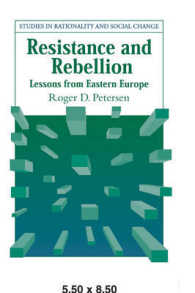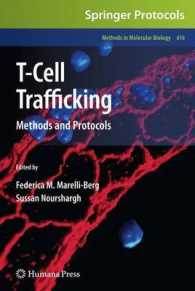Full Description
This book is written for engineering faculty and department chairs as a practical guide to improving the assessment processes for undergraduate and graduate engineering education in the service of improved student learning. It is written by engineering faculty and assessment professionals who have many years of experience in assessment of engineering education and of working with engineering faculty. The book reflects the emphasis placed on student outcomes assessment by ABET, Inc., the organization that accredits most U.S. engineering, computer science and technology programs, as well as providing substantial equivalency evaluations to international engineering programs. The book begins with a brief overview of assessment theory and introduces readers to key assessment resources. It illustrates-through practical examples that reflect a wide range of engineering disciplines and practices at both large and small institutions, and along the continuum of students' experience, from first year to capstone engineering courses through to the dissertation-how to go about applying formative and summative assessment practices to improve student learning at the course and program levels. For most institutions, assessment of graduate education is new; therefore, there are readers who will be particularly interested in the chapters and examples related to graduate education. This book concludes with a vision for the future of assessment for engineering education. The authors cover five basic themes:· Use of assessment to improve student learning and educational programs at both undergraduate and graduate levels· Understanding and applying ABET criteria to accomplish differing program and institutional missions· Illustration of evaluation/assessment activities that can assist faculty in improving undergraduate and graduate courses and programs· Description of tools and methods that have been demonstrated to improve the quality of degree programs and maintain accreditation· Identification of methods for overcoming institutional barriers and challenges to implementing assessment initiatives.
Contents
Foreword—Richard M. Felder; Preface; Acknowledgements; ABET Criteria for Accrediting Engineering Programs; PART ONE. BASICS OF ASSESSMENT. 1. Understanding the Nature and Purpose of Assessment—Linda Suskie; 2. Assessing Student Learning. Ensuring Undergraduate Students Are Learning What We Want Them to Learn—Joni E. Spurlin, Sarah A. Rajala and Jerome P. Lavelle; 3. Assessment Methods Used in Undergraduate Program Assessment—Joni E. Spurlin; 4. Using Assessment Results for Improving Student Learning—Barbara M. Moskal; 5. Tools and Assessment Methods Specific to Graduate Education—J. Joseph Hoey; PART TWO. BARRIERS AND CHALLENGES. 6. Barriers and Challenges to Assessment in Engineering Education—J. Joseph Hoey and Eleanor W. Nault; 7. Overcoming Resistance to Change—Sherra E. Kerns and Karan Watson; PART THREE. LEARNING ALONG THE CONTINUUM OF THE EDUCATIONAL EXPERIENCE. 8. Assessing the First Year of Engineering Education—Jerome P. Lavelle and Sarah A. Rajala; 9. Assessment for Improving Teaching and Student Learning within a Course—C. Dianne Raubenheimer; 10. Using Formative Assessment for Program Improvement—Barbara M. Olds and Ronald L. Miller; 11. The Capstone Experience at the Baccalaureate, Masters and Doctorate Levels—David G. Meyer; PART FOUR. THE FUTURE. 12. The Future of Assessment—Mary Besterfield-Sacre and Larry J. Shuman; Glossary; Contributors; Index. Advisory Board. Mary Besterfield-Sacre, Associate Professor and Fulton C. Noss Faculty Fellow, Department of Industrial Engineering, University of Pittsburgh J. Joseph Hoey, Vice President for Institutional Effectiveness, Savannah College of Art and Design Mike Leonard, Senior Associate Dean and Professor, School of Engineering, Mercer University Eleanor W. Nault, Director of Assessment, Office of Institutional Assessment, Clemson University C. Dianne Raubenheimer, Director of Assessment, College of Engineering, North Carolina State University








